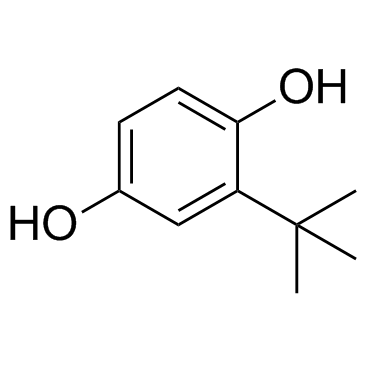KEAP1-Nrf2
The KEAP1-Nrf2 pathway is the major regulator of cytoprotective responses to chemical and/or oxidative stresses caused by reactive oxygen species (ROS) and electrophiles. Nrf2 (nuclear factor erythroid 2-related factor 2) is a transcription factor that binds together with small Maf proteins to the antioxidant response element (ARE) in the regulatory regions of cellular defense enzyme genes leading to the activation of a wide rang of cell defense processes; while KEAP1 (Kelch ECH associating protein 1), a negative repressor of Nrf2, is an adaptor protein for a Cul3-based ubiqutitin E3 ligase that binds to Nrf2 and promotes its degradation by the ubiquitin proteasome pathway.
Produkte für KEAP1-Nrf2
- Bestell-Nr. Artikelname Informationen
-
GC31691
(+)-DHMEQ
(+)-DHMEQ ist ein Aktivator des antioxidativen Transkriptionsfaktors Nrf2.
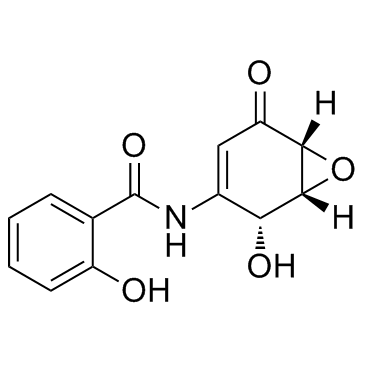
-
GC65610
(R)-5-Hydroxy-1,7-diphenyl-3-heptanone
(R)-5-Hydroxy-1,7-diphenyl-3-heptanon ist ein Diarylheptanoid, das in Alpinia officinarum vorkommt.

-
GC15355
2-Trifluoromethyl-2'-methoxychalcone
Nrf2 activator
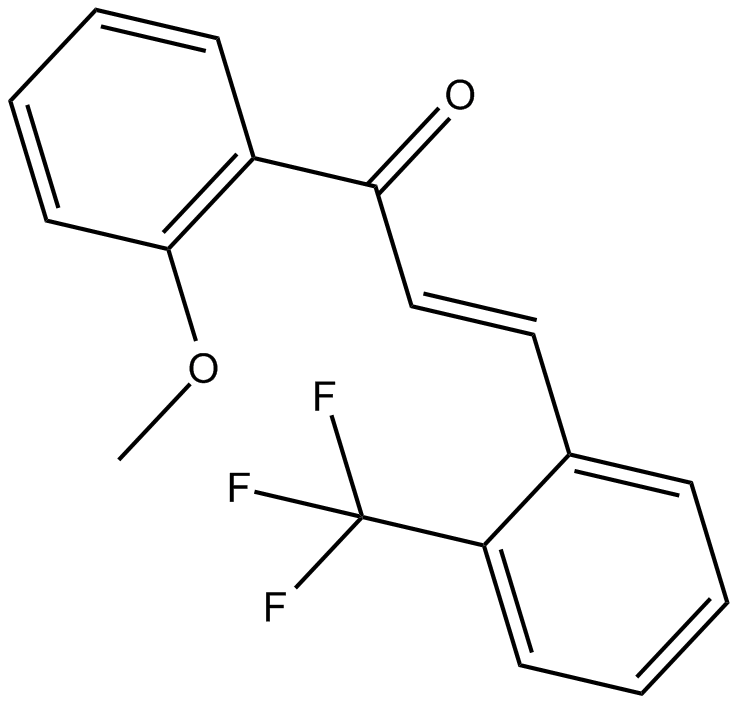
-
GC33815
4-Hydroxyphenylacetic acid
4-HydroxyphenylessigsÄure, ein wichtiger, von Mikrobiota stammender Metabolit von Polyphenolen, ist an der antioxidativen Wirkung beteiligt.
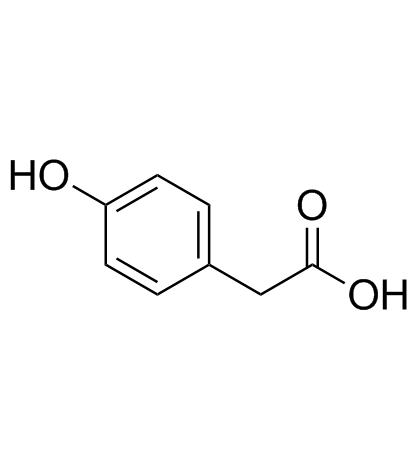
-
GC31648
4-Octyl Itaconate
4-Octyl-Itakonat (4-OI) ist ein zellpermeables Itakonat-Derivat. Itakonat und 4-Octyl-Itakonat hatten eine ähnliche Thiol-Reaktivität, wodurch sich 4-Octyl-Itakonat als geeigneter Ersatz für Itakonat zur Untersuchung seiner biologischen Funktion eignet.
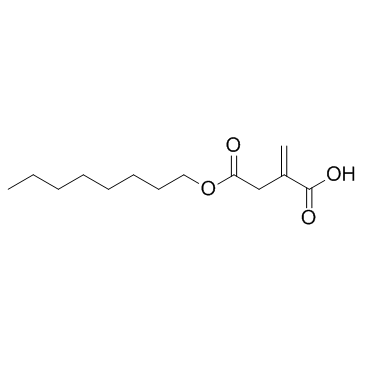
-
GC16120
AI-3
Nrf2/Keap1 and Keap1/Cul3 interaction inhibitor
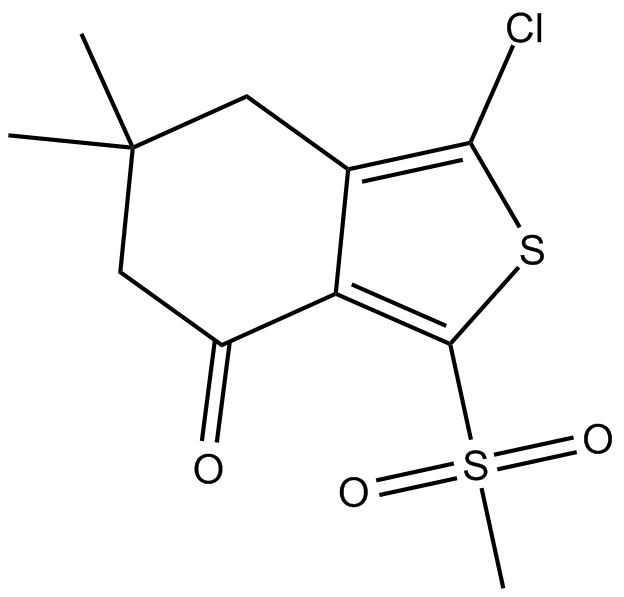
-
GC34070
Brusatol (NSC 172924)
Brusatol (NSC 172924) (NSC172924) ist ein einzigartiger Inhibitor des Nrf2-Signalwegs, der ein breites Spektrum von Krebszellen fÜr Cisplatin und andere Chemotherapeutika sensibilisiert. Brusatol (NSC 172924) verstÄrkt die Wirksamkeit der Chemotherapie, indem es den Nrf2-vermittelten Abwehrmechanismus hemmt. Brusatol (NSC 172924) kann zu einem adjuvanten Chemotherapeutikum entwickelt werden. Brusatol (NSC 172924) erhÖht die zellulÄre Apoptose.
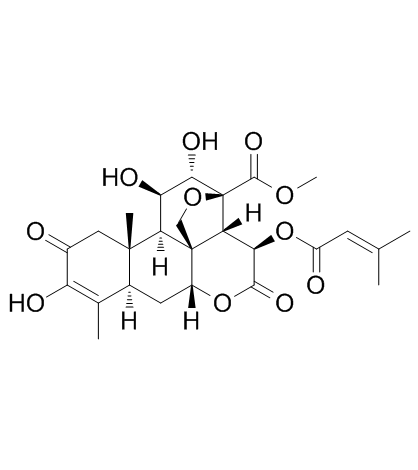
-
GC35629
CDDO-dhTFEA
CDDO-dhTFEA (RTA dh404) ist eine synthetische Oleanan-Triterpenoid-Verbindung, die Nrf2 wirksam aktiviert und den entzÜndungsfÖrdernden Transkriptionsfaktor NF-κB hemmt.
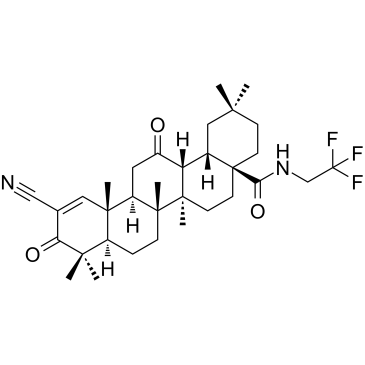
-
GC35630
CDDO-EA
CDDO-EA ist ein mit NF-E2 verwandter Faktor 2/antioxidatives Response-Element (Nrf2/ARE)-Aktivator.

-
GC32723
CDDO-Im (RTA-403)
CDDO-Im (RTA-403) (RTA-403) ist ein Aktivator von Nrf2 und PPAR, mit Kis von 232 und 344 nM fÜr PPARα und PPARγ.
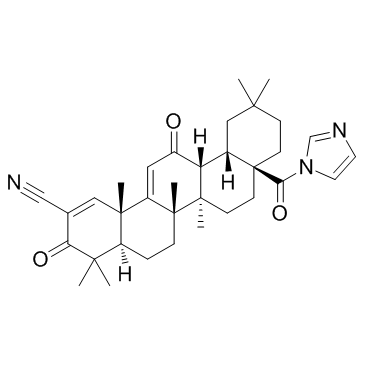
-
GC40226
Curcumin-d6
Curcumin D6 (Diferuloylmethan D6) ist ein Deuterium mit der Bezeichnung Curcumin (gelbe Kurkuma).

-
GC64971
DDO-7263
DDO-7263, ein 1,2,4-Oxadiazol-Derivat, ist ein potenter Nrf2-ARE-Aktivator.
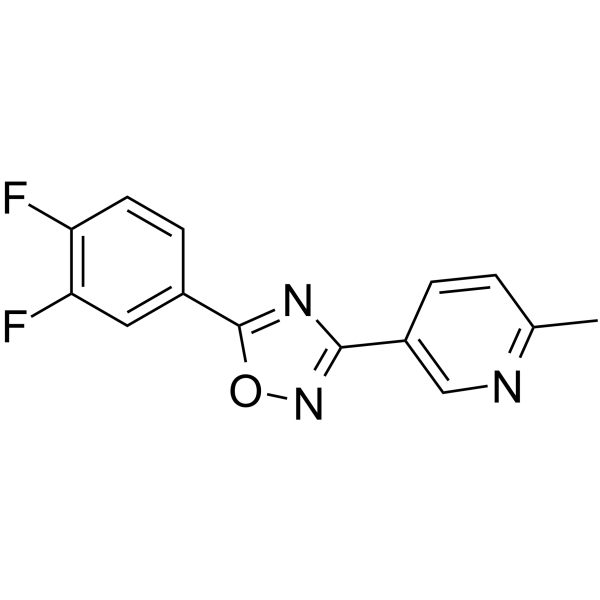
-
GC16590
Dimethyl Fumarate
Dimethylfumarat (DMF) ist ein oral aktiver und in das Gehirn eindringender Nrf2-Aktivator und induziert eine Hochregulierung der antioxidativen Genexpression.
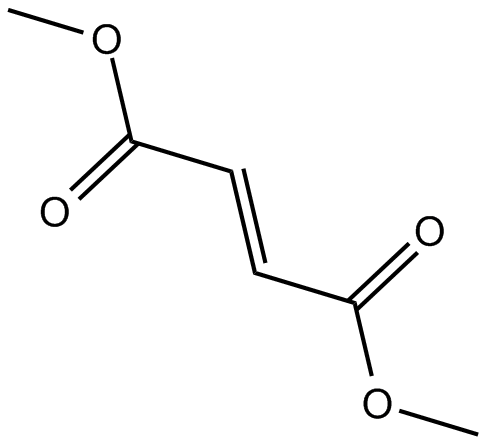
-
GC15605
Ezetimibe
Ezetimib (SCH 58235) ist ein starker Hemmer der Cholesterinabsorption.
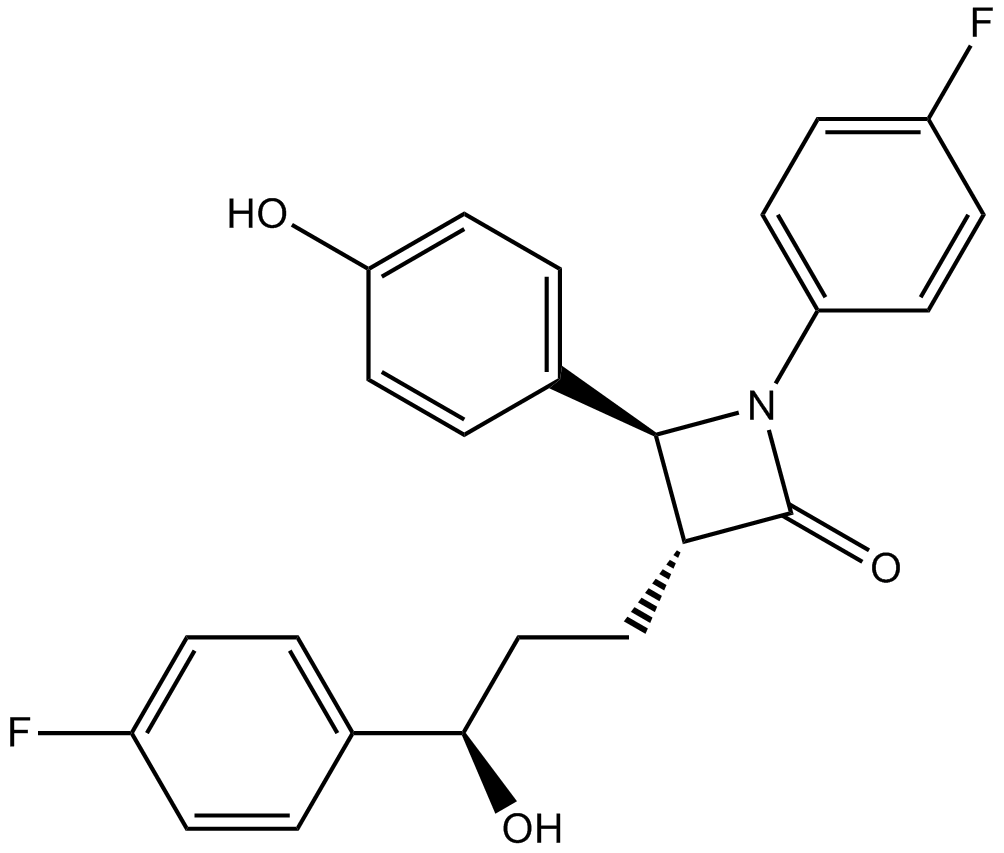
-
GC66354
Ezetimibe-d4-1
Ezetimib-d4 ist Deuterium mit der Bezeichnung Ezetimib. Ezetimib (SCH 58235) ist ein starker Hemmer der Cholesterinabsorption. Ezetimib ist ein C1-like1 (NPC1L1)-Hemmer von Niemann-Pick und ein starker Nrf2-Aktivator.
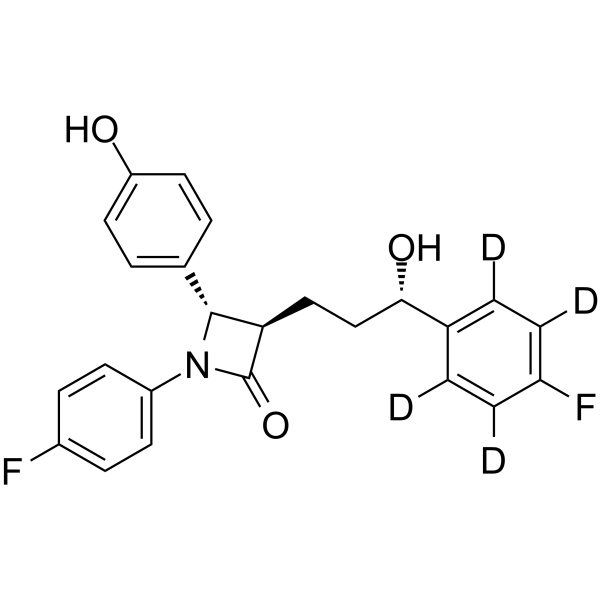
-
GC33092
Hesperin
Hesperin ist ein bioaktiver Inhaltsstoff, der in japanischem Meerrettich (Wasabi) vorkommt und sich als Nrf2-Aktivator erwiesen hat.
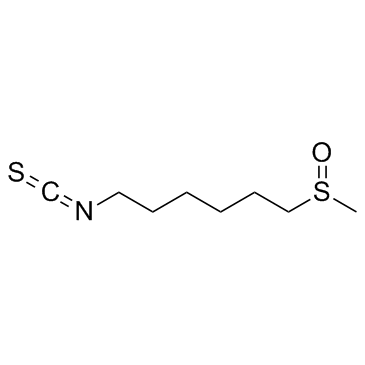
-
GC11302
Hinokitiol
Hinokitiol ist ein Bestandteil Ätherischer Öle, die aus Chymacyparis obtusa isoliert wurden, reduziert die Nrf2-Expression und verringert die mRNA- und Proteinexpression von DNMT1 und UHRF1 mit antiinfektiÖsen, antioxidativen und AntitumoraktivitÄten.

-
GC66004
K67
K67 hemmt spezifisch die Interaktion zwischen Keap1 und S349-phosphoryliertem p62. K67 verhindert, dass p-p62 die Bindung von Keap1 und Nrf2 blockiert. K67 hemmt wirksam die Proliferation von HCC-Kulturen mit hochzellulÄrem S351-phosphoryliertem p62, indem es die von Keap1 angetriebene Ubiquitinierung und den Abbau von Nrf2 wiederherstellt.
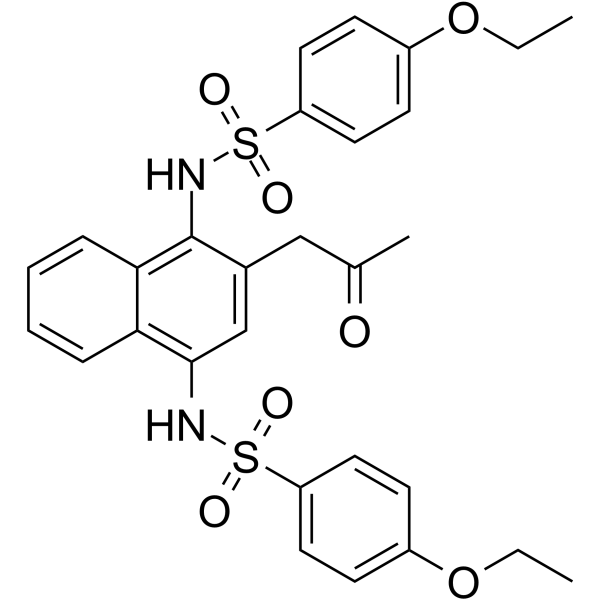
-
GC36390
Keap1-Nrf2-IN-1
Keap1-Nrf2-IN-1 ist ein Protein-Protein-Interaktionsinhibitor von Keap1 (Kelch-like ECH-associated protein 1)-Nrf2 (nuclear factor erythroid 2-related factor 2) und mit einem IC50-Wert von 43 nM fÜr das Keap1-Protein.
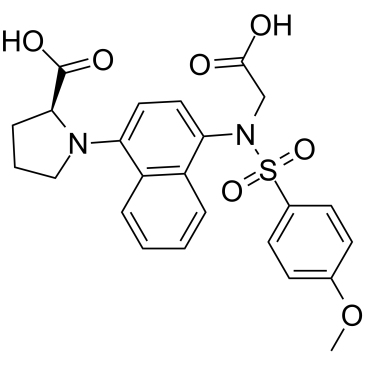
-
GC31321
KI696
KI696 ist eine hochaffine Sonde, die die Keap1/NRF2-Interaktion unterbricht.
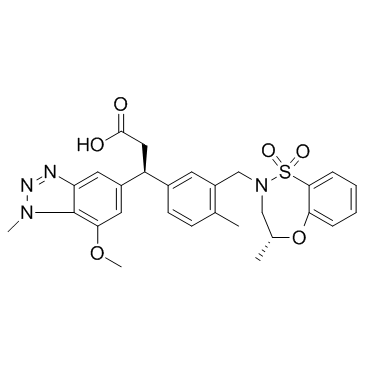
-
GC34642
KI696 isomer
Das KI696-Isomer ist das weniger aktive Isomer von KI696.
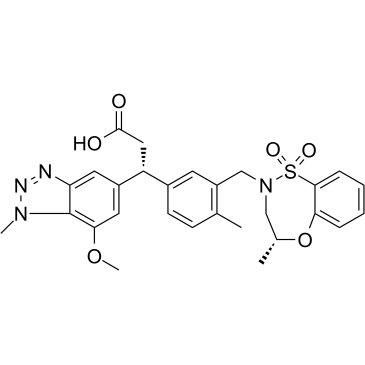
-
GC31783
Methyl 3,4-dihydroxybenzoate (Protocatechuic acid methyl ester)
Methyl-3,4-dihydroxybenzoat (Protocatechinsäuremethylester) (Protocatechinsäuremethylester; Methylprotokatechuat) ist ein wichtiger Metabolit von antioxidativen Polyphenolen, die in grünem Tee gefunden werden.

-
GC38819
ML334
ML334 ist ein potenter, zellgÄngiger Aktivator von NRF2 durch Hemmung der Keap1-NRF2-Protein-Protein-Wechselwirkung. ML334 bindet an die Kelch-DomÄne von Keap1 mit einem Kd von 1 μM. ML334 stimuliert die NRF2-Expression und Kerntranslokation und induziert die AktivitÄt von Antioxidans-Response-Elementen (ARE).
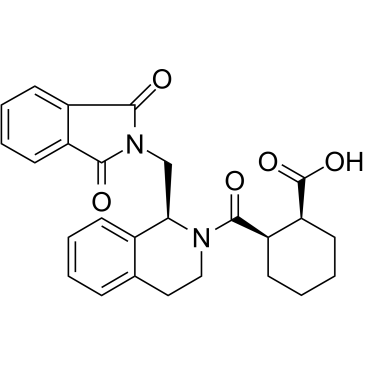
-
GC19254
ML385
ML385 ist ein spezifischer nuklearer Erythroid-2-bezogener Faktor 2 (NRF2)-Inhibitor mit einem IC50-Wert von 1,9 μM.
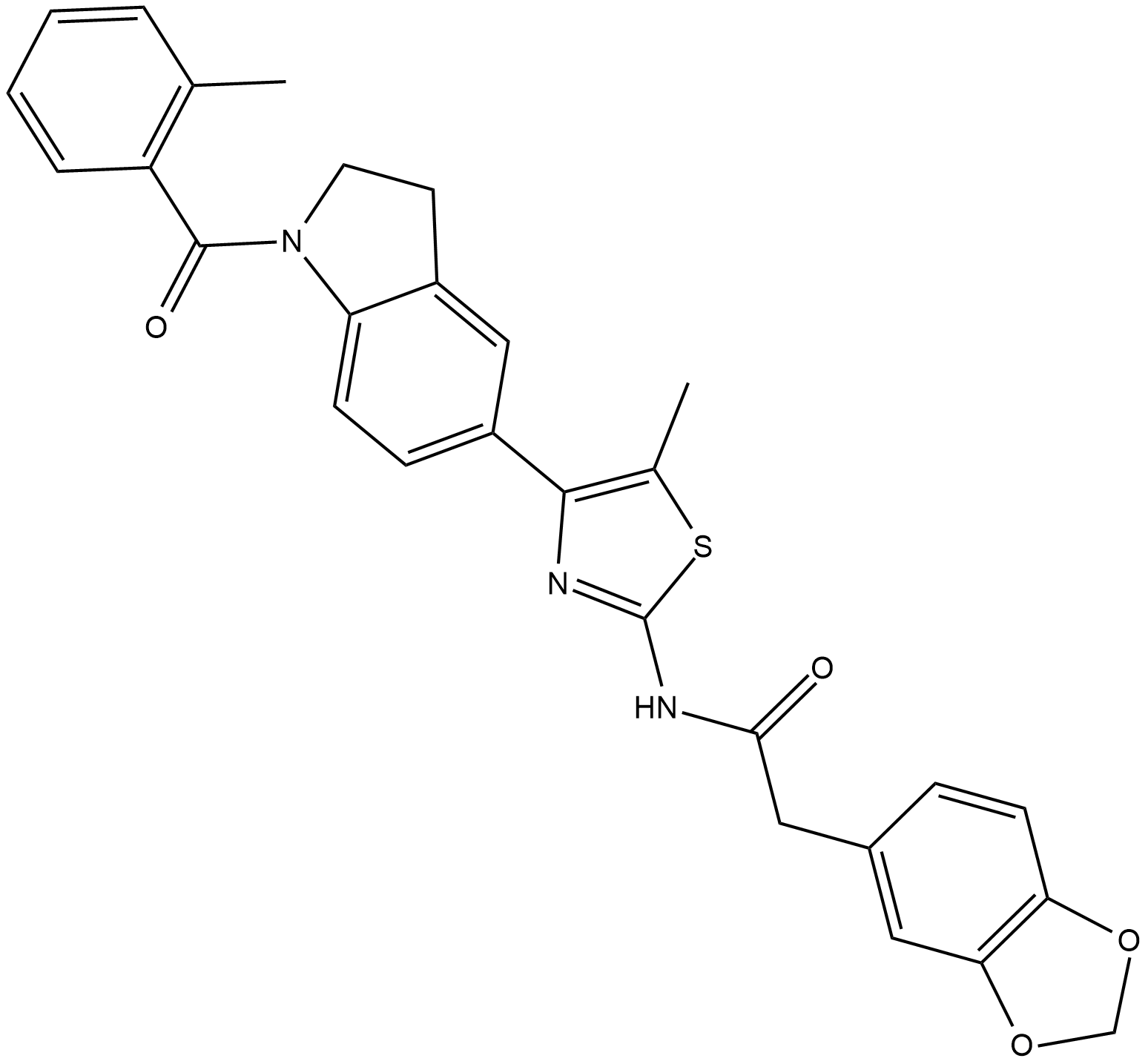
-
GC13058
NK 252
NK 252 ist ein potenzieller Nrf2-Aktivator, der ein großes Nrf2-aktivierendes Potenzial aufweist.
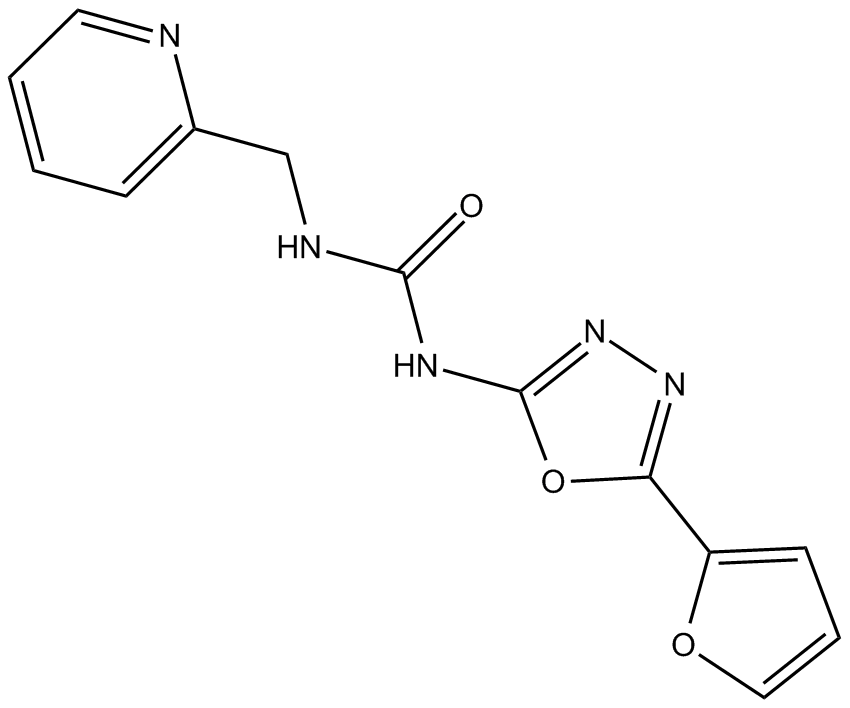
-
GC69590
Nrf2 activator-2
Nrf2-Aktivator-2 (Verbindung O15) is a derivative of sulforaphane, an effective Nrf2 activator with an EC50 of 2.9 μM in 293 T cells. Nrf2 activator-2 effectively inhibits the interaction between Keap1 and Nrf2, thereby showing an activating effect on Nrf2. Nrf2 activator-2 significantly reduces the level of ubiquitinated Nrf2 in cells.
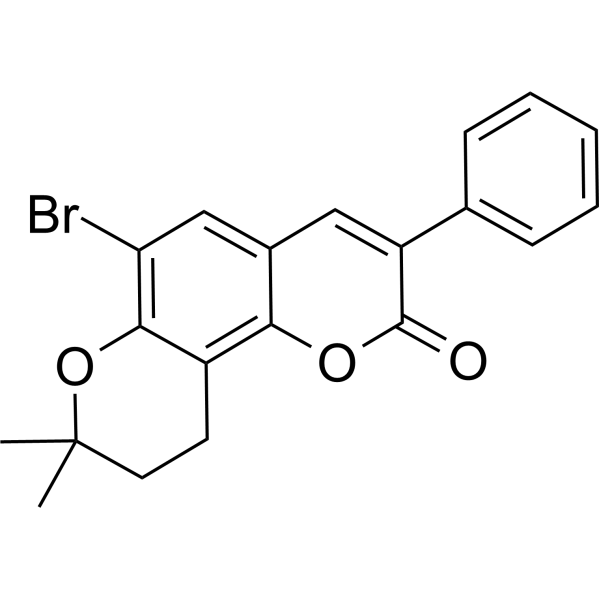
-
GC66054
Nrf2 activator-4
Nrf2-Aktivator-4 (Verbindung 20a) ist ein hochpotenter, oral aktiver Nrf2-Aktivator mit einem EC50-Wert von 0,63 μM. Nrf2-Aktivator-4 unterdrÜckt reaktive Sauerstoffspezies gegen oxidativen Stress in Mikroglia. Nrf2-Aktivator-4 stellt die Lern- und GedÄchtnisbeeintrÄchtigung in einem Scopolamin-induzierten Mausmodell effektiv wieder her.
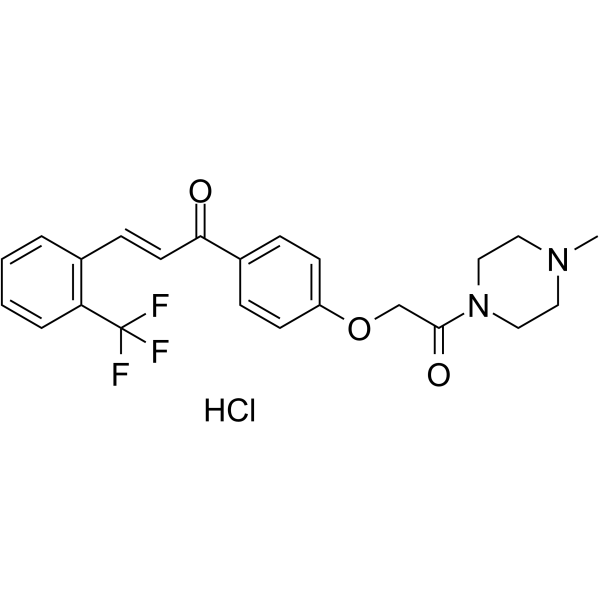
-
GC36773
Nrf2-IN-1
Nrf2-IN-1 ist ein Inhibitor des Kernfaktors Erythroid 2-verwandter Faktor 2 (Nrf2). Nrf2-IN-1 wurde fÜr die Erforschung der akuten myeloischen LeukÄmie (AML) entwickelt.
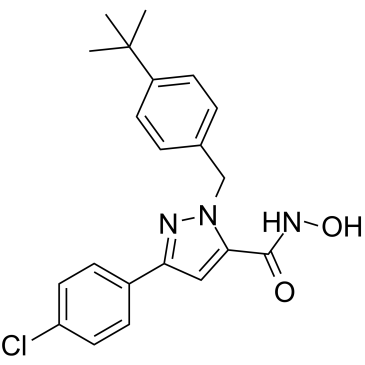
-
GC12821
Oltipraz
Oltipraz hat eine zeitabhÄngige hemmende Wirkung auf die HIF-1α-Aktivierung, wobei die HIF-1α-Induktion bei Konzentrationen von ≥ 10 μM vollstÄndig aufgehoben wird, die IC50 von Oltipraz fÜr die HIF-1α-Hemmung betrÄgt 10 μM. Oltipraz ist ein starker Nrf2-Aktivator.
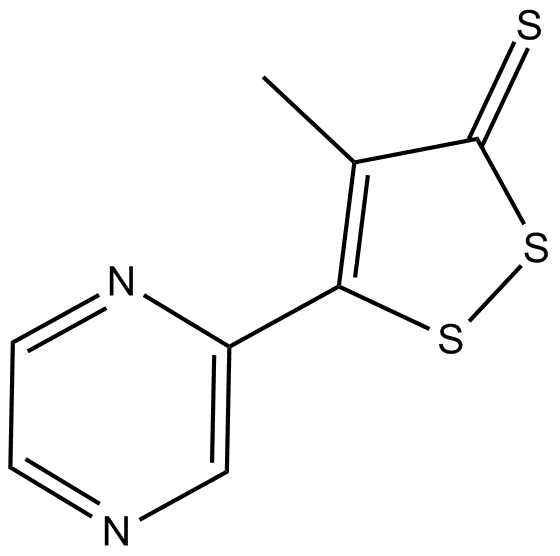
-
GC13693
Omaveloxolone (RTA-408)
Omaveloxolon (RTA-408) (RTA 408) ist ein antioxidativer EntzÜndungsmodulator (AIM), der Nrf2 aktiviert und Stickstoffmonoxid (NO) unterdrÜckt.
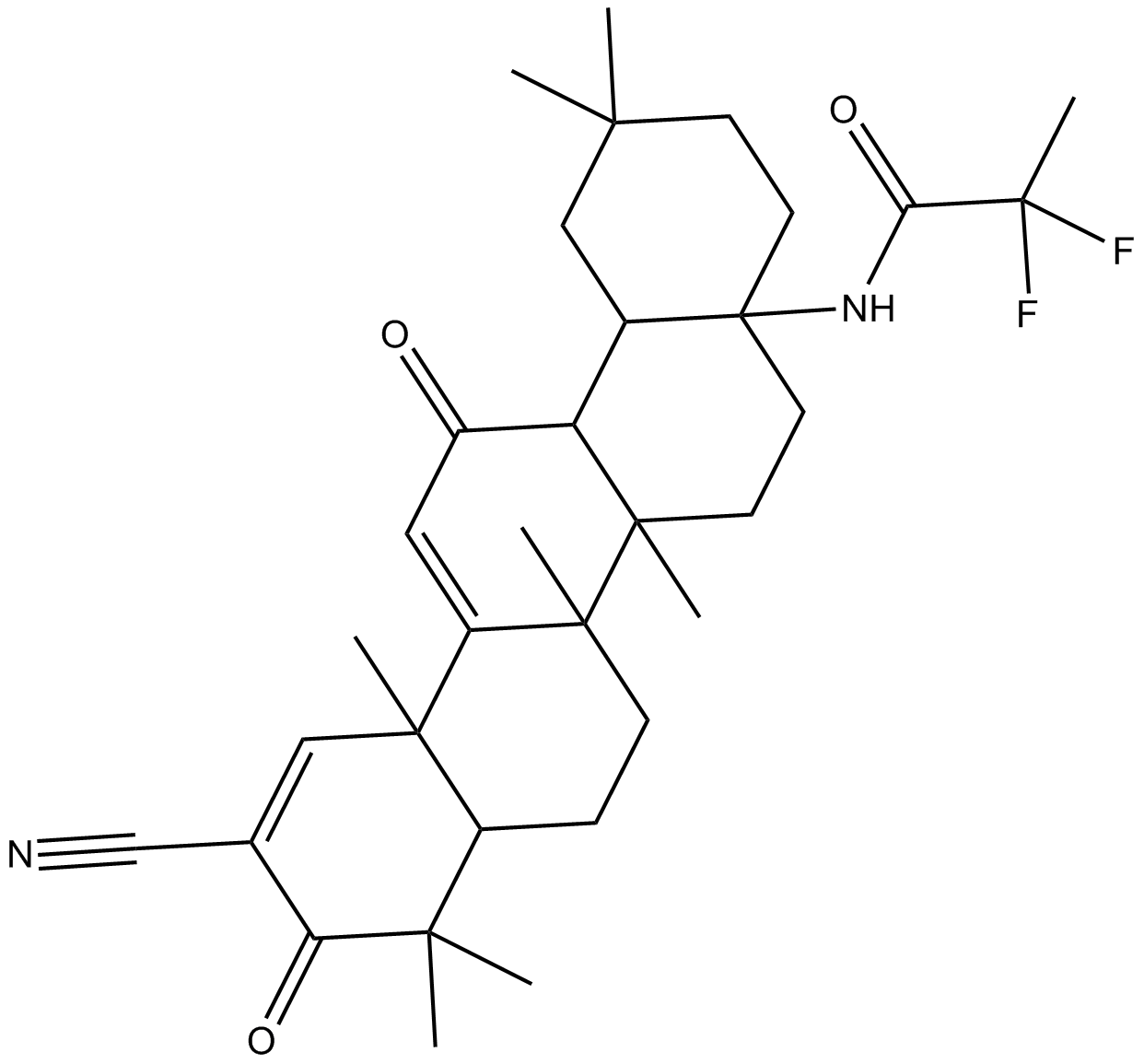
-
GC15457
Pyridoxine
Pyridoxin (Pyridoxol) ist ein Pyridinderivat.
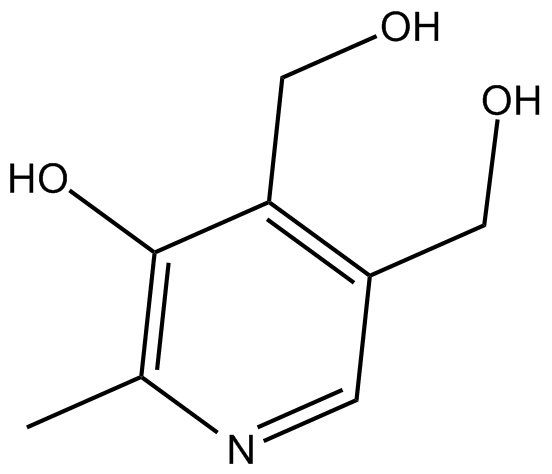
-
GC17393
Pyridoxine HCl
Pyridoxin-HCl (Pyridoxol; Vitamin B6) ist ein Pyridin-Derivat.
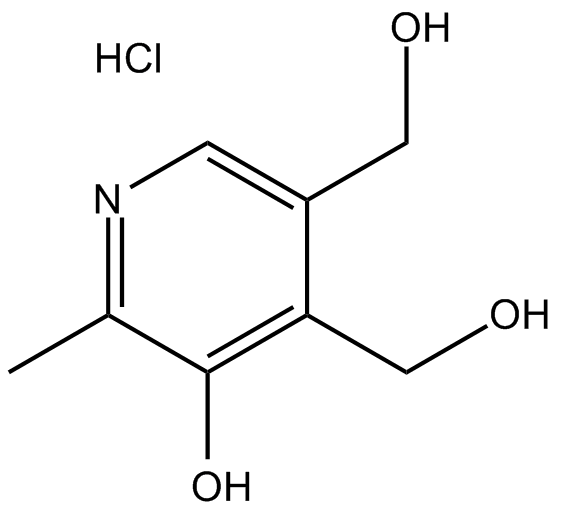
-
GC63933
S-Allylmercaptocysteine
S-Allylmercaptocystein, eine aus Knoblauch gewonnene organische Schwefelverbindung, wirkt bei verschiedenen Lungenerkrankungen entzÜndungshemmend und antioxidativ.
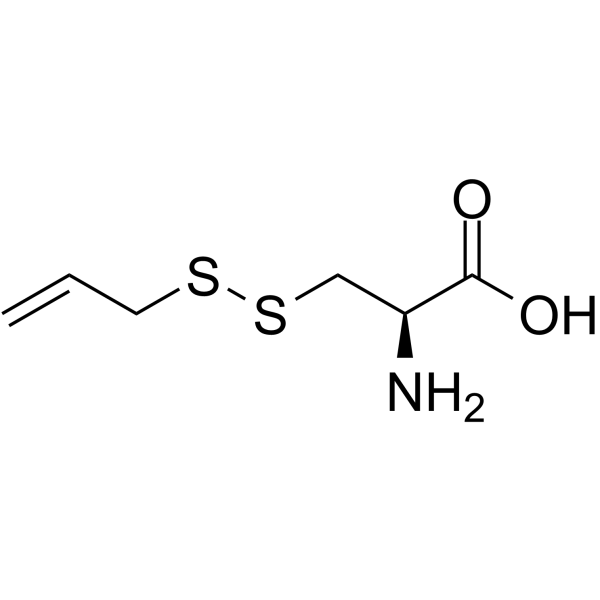
-
GC14352
TAT 14
TAT 14 ist ein 14-meres Peptid, das als Nrf2-Aktivator mit entzündungshemmender Wirkung wirkt.

-
GC34057
TBHQ (tert-Butylhydroquinone)
TBHQ (tert-Butylhydrochinon) (tert-Butylhydrochinon) ist ein weit verbreiteter Nrf2-Aktivator, der durch Aktivierung von Nrf2 vor Doxorubicin (DOX)-induzierter KardiotoxizitÄt schÜtzt. TBHQ (tert-Butylhydrochinon) (tert-Butylhydrochinon) ist ebenfalls ein ERK-Aktivator; rettet Dehydrocorydalin (DHC)-induzierte Hemmung der Zellproliferation bei Melanomen.
